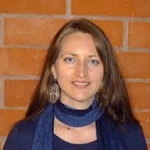 Danijela Gasevic, MD
Danijela Gasevic, MD
Dr. Gasevic is a Research Associate at Cardiac Services, Royal Columbian Hospital, New Westminster, BC, Canada; and a PhD candidate in the department of Biomedical Physiology and Kinesiology at Simon Fraser University, Vancouver, BC, Canada. Her research interests include prevention and management of chronic non-communicable diseases. Danijela sits on advisory committees of the Public Health Agency of Canada, Heart and Stroke Foundation BC & Yukon, and Fraser Health Authority advising on projects/initiatives related to chronic disease prevention. Danijela also commits time to working in the community where she performs cardiovascular risk assessments and counsels community members on chronic disease prevention.
On October 2, from 12:30 until 1:30 pm (Central Time), in the Rady Room (Rm 601 in Nedderman Hall)
Dr. Gasevic delivered the following public presentation:
Title: Every move is a good move! The association between the built environment and physical activity
Abstract:
There is growing recognition that the way cities are built, the built environment, can positively or negatively affect our health and health-related behaviours, such as physical activity. Physical activity reduces incidence of, and mortality from, cardiovascular disease, type 2 diabetes and some forms of cancer such as colon and breast cancers; it reduces rates of fall incidences, helps in the treatment of patients with sleep disorders, and contributes positively to a general sense of well-being and a positive frame of mind. Despite the known benefits of physical activity, 31% of adults globally are insufficiently active. Physical inactivity has been regarded as a public health crisis and increasing physical activity is a global public health priority. Historically, the main approach to increasing PA was to advise individuals to increase personal physical activity levels, but it has since been recognized that, rather than targeting individuals or small groups, physical activity interventions should be aimed at large groups of people or populations so as to bring about a population wide-change. One of the ways to increase physical activity at the population level is by restructuring the environments in which physical activity takes place. In this talk, I will present built environment features linked to physical activity and outline potential environmental strategies to promote physical activity.

